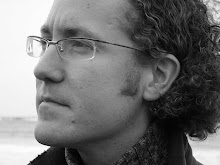(This is a terribly belated write-up! But better late than never.)
Last July (29-30th, 2014) I was very privileged to be asked to host a two night event in the Academy of Motion Picture Arts and Sciences (AMPAS), Linwood Dunn Theatre in Los Angeles. I had been approached for my work on the cognitive science of film viewing as AMPAS were interested in hosting an event that would bring together filmmakers with scientists to explore, for the first time the way viewers process images, events and stories experienced on the silver screen. Of course, I jumped at this opportunity as it would give me the chance to pick and choose who I considered some of the most interesting filmmakers working today along with some of the most brilliant and inspiring cognitive scientists and orchestrate the discussion I had always dreamed of.
The title of the event was "Movies in Your Brain: The Science of Cinematic Perception" and attracted a sold-out audience of Academy members, general public, scientists and filmmakers. The structure for the two nights was:
Night 1
The event consisted of film clips, discussions and presentations from:
Walter Murch (film editor/sound designer/director; Apocalypse Now, The English Patient and The Godfather Part II)
Jon Favreau (actor/producer/director; Iron Man, Chef, The Jungle Book)
Prof. Uri Hasson (Princeton U., expert in film perception, social cognition, and neuroimaging)
Prof. James Cutting (Cornell; expert in visual perception, cognition and the evolution of film form)
Night 1 also involved a live audience experiment testing Walter Murch's ideas about blink entrainment during The Conversation and how he believes he can guide an audience's attention and shape their perception during a film by using composition, editing and sound design. AMPAS have created a short video which captures some of this discussion between myself, Walter Murch and Jon Favreau.
During Night 1 we also conducted an eyetracking experiment on the Monaco sequence from Favreau's Iron Man 2. This data was gathered as participants arrived at the event using a Tobii TX300 tracker, quickly rendered into a heatmap video which shows where the densest concentration of viewer gaze is during the video and then I had the joy of discussing this data with the director responsible for creating the film, Jon Favreau. His insights into how this synchrony of attention was created was surprising and often very funny.
Night 2
The evening had a similar structure to night 1 but with a focus on the work of:
Darren Aronofsky (director/writer; Requiem for a Dream, The Fountain, Black Swan, Noah)
Ari Handel (screenwriter/producer/neuroscientist; The Fountain, The Wrestler, Black Swan)
Prof. Jeff Zacks (Washington U.-St. Louis; expert on event perception, neuroimaging and author of Flicker: Your brain on Movies; see a great video on Jeff's work here)
Prof. Talma Hendler (Tel-Aviv; expert in neuroscience, emotion, social cognition, and empathy in the movies)
Night 2 increased our insight into the what is going on in the brain of viewers whilst watching a movie. As provocation for delving into the extremes of cinematic experience we featured the work of Aronofsky who's films often push the boundaries of audience emotions by using tropes from horror, thrillers and deep portrayals of psychological distress and disorder (such as schizophrenia in Black Swan). Hendler, in conjunction with Uri Hasson ran a neuroimaging study on the final 15 minutes of Black Swan in an fMRI scanner. The data illustrated how audiences both experienced extreme distress at the shocking sequence, empathised with Nina, the main character played by Natalie Portman as she undergoes a psychological and physical break down but also control their emotional responses as a form of psychological self-defense. The research showcased in this demo is truly stunning and paves the way for future work into the neural mechanisms of rich cognitive and emotional cinematic experience. You can find a video on Hendler's work here.
Darren Aronosfky and Ari Handel's responses to the science demonstrated a great insight into their craft and how they explicitly make directorial and scriptwriting decisions to either elicit a shared, universal experience in their audience or create moments of fracture in which audience members take something unique and idiosyncratic from their movies. The AMPAS clip below beautifully captures this discussion with myself and Jeff Zacks.
The event ended with the presentation of a short test film the Aceademy Tech Council had created as a dramatic demonstration of the multiple possibilities of high frame rate (HFR) filmmaking. A single-shot, silent short entitled “The Affair” was filmed with identical camera moves and identical performances more than 30 times at different frame rates: 24fps (the cinematic standard), 48fps, 60fps, 120fps and several speeds in between. Four frame rates (24, 48, 60 and 120fps) were presented to the audience. The leap between each was both fascinating and divisive, with a show of hands revealing how much further we all have to go before deciding what the experience of watching and absorbing a movie will mean in the future.
The two nights were a stunning success and I really can't do them justice describing them here. AMPAS have provided a great write-up on their website (here) and we were very fortunate to have the science of the event featured by Wired on-line as a series of articles (here). If you want to get a sense of what was discussed I would immediately direct you to these existing articles.
I have to thank AMPAS for hosting this event, the AMPAS staff (Academy Governor, Bill Kroyer; Maryrose McMahon, Joe di Gennaro and their crew), the filmmakers with taking time out of their busy schedules to blow our minds and the scientists for sharing their work and inspiring me and the audience. I hope this will be the first of many such events the AMPAS and other such societies host in the future.





No comments:
Post a Comment